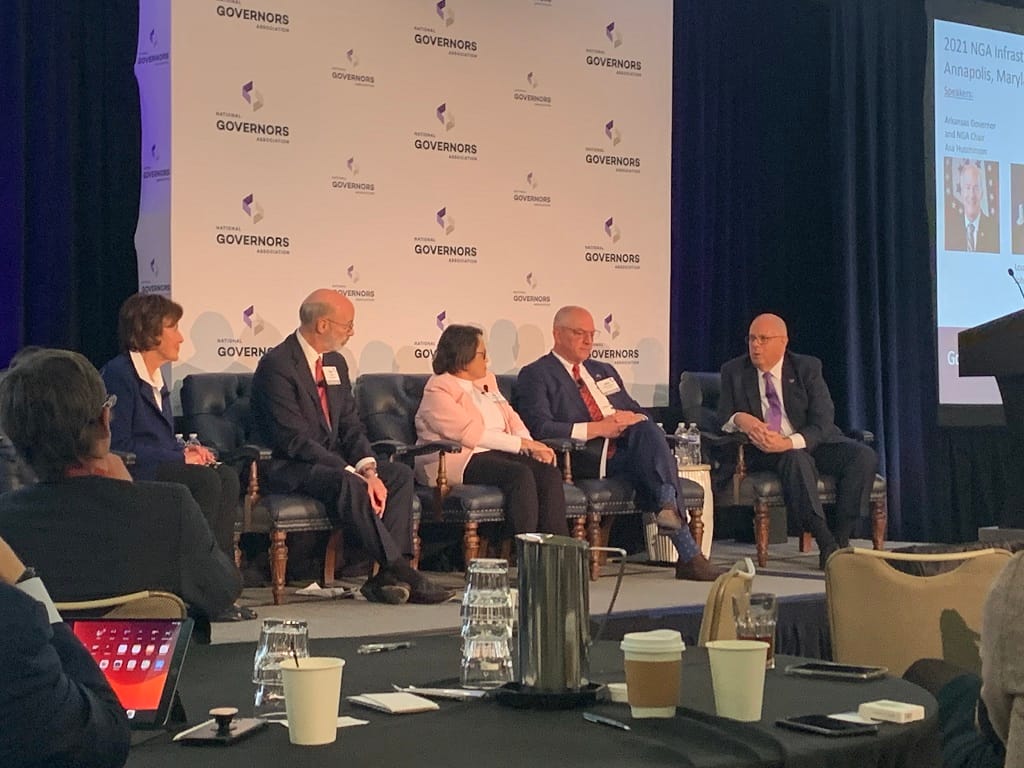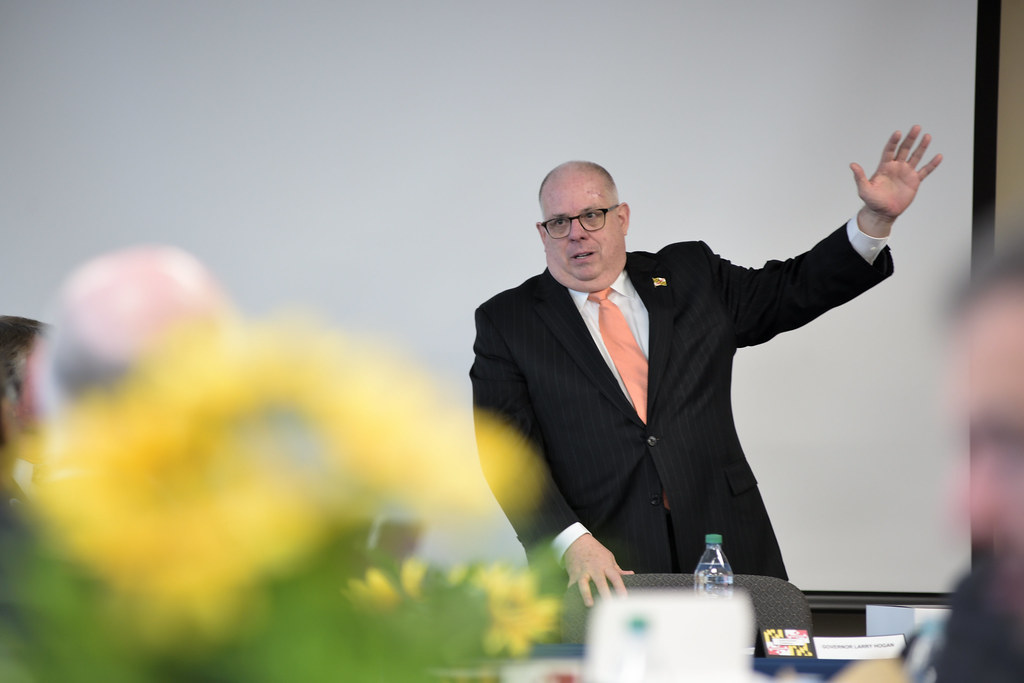Governors Discuss Infrastructure Bill Spending at Summit
Leaders addressed strategies and importance of private spending.
Benjamin Kahn

ANNAPOLIS, December 2, 2021 – Governors from some states gathered in Annapolis, Maryland, to discuss how they would use the billions in funding coming from the Infrastructure Investment and Jobs Act.
The three-day National Governor’s Association Infrastructure Summit, a large part of which was closed off to media, hosted a panel discussion on Tuesday. The panel included Louisiana Democratic Governor John Bel Edwards, Guam Democratic Governor Lourdes Leon Guerrero, Maryland Republican Governor Larry Hogan, and Pennsylvania Democratic Governor Tom Wolf.
Edwards said that once Louisiana had received money from the infrastructure bill – signed into law in mid-November that would provide a minimum of $100 million to the states – the changes to broadband would be drastic. “We will be able to address [access and the digital divide] to a degree that was not be possible before.
“If there is a home or business [in Louisiana] without high-speed internet by 2029, it is because they do not want it,” Edwards said. He explained that because Louisiana identified the shortcomings in its broadband infrastructure and began laying the groundwork to improve it years ago, the state is more well equipped to take advantage of the funding that will come with the IIJA.
In early 2020, Edwards announced his “Broadband for Everyone in Louisiana” plan that outlined coverage priority areas, the guiding principles, and goals for the state’s approach to improved broadband connectivity. The state broadband office, Connect L.A., was formed to help put the plan into action.
As part of the state’s initiative to bridge the digital divide, Edwards’ administration created Louisiana’s Grant Unserved Municipalities Broadband Opportunities program, or GUMBO, to help underserved and unserved areas apply for federal funding for broadband projects.
Need for private investment
Wolf pointed to actions Pennsylvania is taking to ensure that funds are not squandered. “[The IIJA] is not an infinite amount of money and it is not nearly what our engineers say we need,” he said. To get the most out of the funding they receive, Wolf recommended that states create centralized infrastructure banks to only allocate money to approved projects and avoid both literal and figurative “bridges to nowhere.”
“Private investment is also critically important,” Hogan said. Indeed, all the governors sharing the stage encouraged states to explore public-private efforts. Edwards said he was hopeful that the IIJA would not tie states’ hands, preventing states from utilizing such models. “We need an approach that has the flexibility to work for us,” he said. “I hope the rules are not written in a way that requires us to do all of this ourselves [without private investment].”
The purpose of this gathering is to allow governors, their secretaries, and staff to meet, collaborate, and share their experiences to help states partner for regional infrastructure projects, prioritize projects, and learn to obtain the necessary resources from the federal government to complete said projects.
Hogan presented the opening keynote and participated in some of the first day’s events. Bipartisanship was one of the focal points of the summit, and Hogan hammered on it during his keynote.
“A lot of conventional wisdom was that a federal infrastructure bill could not be in a bipartisan way,” he said. Hogan said that the collaborative work governors did on a state and regional level proved this “wisdom” to be false, stating, “the nation’s governors will continue to lead the way.”
Waiting on the federal government
Hogan said that while the money in the IIJA will be “transformational,” there are still a considerable number of unknowns. “We are still waiting for guidance from the federal government,” he said. As it stands now, he said there is no precise timeline for when the funds will be dispensed or if certain monies will have rigid, unknown requirements that could hold up the process. “The devil is in the details,” said Hogan.

Maryland Governor Larry Hogan
“We will find a way to make use of every penny we receive,” he added, but said it was still unclear how much money the state would get or, where it could be used, and when the state would get it.
Hogan said Maryland’s efforts would be concentrated on repairing and modernizing infrastructure, while also devising new ways to streamline the deployment of future projects.
The NGA summit runs through December 2 and covers topics such as broadband, freight transportation, green infrastructure and supply chain issues.











Member discussion